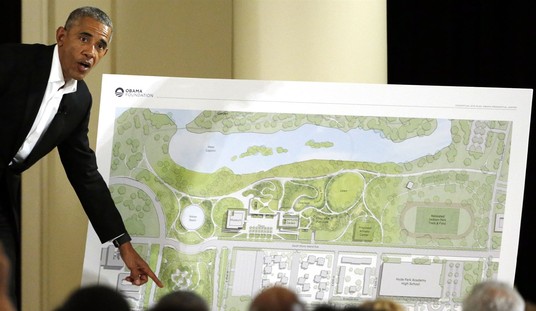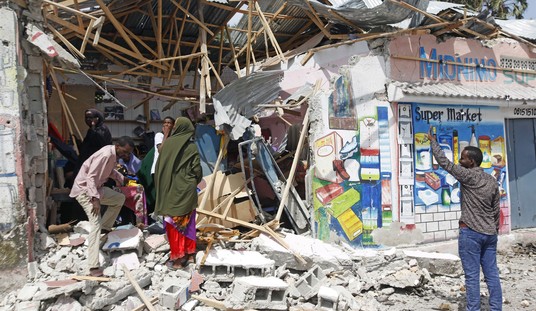On Thursday, Flexport CEO Ryan Petersen surveyed southern California’s Los Angeles and Long Beach ports. The logistics, technology, and infrastructure expert’s three-hour boat tour provided an up-close view of the nation’s port supply-chain backup.
Even though President Biden ordered them to work around the clock, the “ports of LA/Long Beach are at a standstill,” observed Petersen on Twitter. “In a full 3-hour loop through the port complex, passing every single terminal, we saw less than a dozen containers get unloaded.” Of the hundreds of cranes at the ports, Petersen “counted only about seven that were even operating and those that were seemed to be going pretty slow.”
As Petersen and other experts see it, the main bottleneck in the shipping process is yard space at the container terminals. “The terminals are simply overflowing with containers,” explained Petersen, “which means they no longer have space to take in new containers either from ships or land. It’s a true traffic jam.”
Related: Ports Council Chair Warns that Higher Prices Are Here to Stay
With the shipping yards so full of containers both full and empty, truckers and longshoremen have nowhere to put containers waiting on ships and trucks.” Right now if you have a [truck] chassis with no empty container on it, you can go pick up containers at any port terminal,” said Petersen. “However, if you have an empty container on that chassis, they’re not allowing you to return it except on [a] highly restricted basis.” So, if the truckers can’t get the empty containers off of their chassis, they won’t have a chassis to use to pick up the next container; if no one is able to pick up the next container, the port becomes jammed by the pile-up of empty containers.
How severe is the pile-up? One trucking company owner who has six shipping yards representing 153 owner/operator drivers told Petersen he has nearly three containers for every driver in his company just sitting on chassis at his yard. The city of Long Beach won’t permit him to take the containers off the chassis because zoning codes restrict the height of empty containers to no more than two high. If he violates the zoning code the city will completely shut down his yard. And his is only one of many trucking companies experiencing this backup. “With the chassis all tied up storing empties that can’t be returned to the port, there are no chassis available to pick up containers,” said Petersen. As a result of all the containers piling up in the terminal yards, the longshoremen are unable to unload the ships in the ports. That backup is “now over 70 ships containing 500,000 containers” currently waiting offshore—a backup that will only grow exponentially larger over time.
So how do we fix this backup or “bottleneck,” as Petersen calls it, and get our supply chain working again?
Here's a simple plan that @potus and @GavinNewsom partnered with the private sector, labor, truckers, and everyone else in the chain must implement TODAY to overwhelm the bottleneck and create yard space at the ports so we can operate against
— Ryan Petersen (@typesfast) October 22, 2021
Petersen’s 5-Step plan is simple:
- [Biden or Newsom] quickly issues an Executive Order (EO) effective immediately to temporarily override the port zoning codes of Long Beach and Los Angeles in order to allow truck yards to store empty containers up to six high. The EO will free up tens of thousands of chassis that are currently just storing containers on wheels. The chassis can be immediately used to haul away full containers from the ports.
- Borrow every available truck chassis owned by the U.S. military and the National Guard and use them at the ports.
- Create a new temporary container yard on a large (500+ acres) piece of government land adjacent to an inland railhead within 100 miles of the port complex.
- Force the railroads to haul all containers to the new site, turn around and come back. No more 1,500-mile train journeys to Dallas. We’re doing 100-mile shuttles, turning around and doing it again. Truckers will go to this site to get containers instead of the ports.
- Bring in barges and small container ships and start hauling containers out of Long Beach to other smaller ports that aren’t backed up.
Petersen admits that his plan “is not comprehensive,” but says these steps are vital to get our ports working again. “I can’t stress enough how bad it is for the world economy if the ports don’t work,” Petersen warns. “Every company selling physical goods bought or sold internationally will fail. The circulatory system our globalized economy depends [on] has collapsed.” And since it’s getting worse every day that goes by, Petersen has volunteered “to lead this effort for the federal or state government if asked.”
“Leadership is the missing ingredient at this point,” he concludes.
It remains to be seen if Biden will listen to Petersen’s expert advice or continue to placate the American public with his ineffective speeches and meaningless platitudes.










